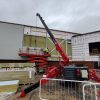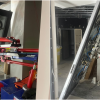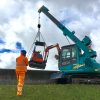Avoid any potential disaster when attempting to operate cranes or vacuum lifters in high winds like we have been experiencing recently with GGR’s essential safety guide.
When lifting outdoors it is always important to stay alert to sudden changes in weather conditions. We all know that British weather is notoriously unpredictable and can swiftly move from bright and sunny to wet and windy. Even the smallest increase in wind speed can affect the stability of compact cranes and the performance of vacuum lifters quite dramatically.
GGR’s Health and Safety Manager, Kevin Fairholm says, ‘It is vital to remember that you are dealing with a potentially dangerous situation whenever heavy equipment is used on site. When we add the elements of suspended loads and bad weather these dangers increase. In order to stay safe on site always take the weather conditions into consideration’.
Maximum wind speed: Vacuum Lifters
The maximum wind speed for safe vacuum lifter use is 18 miles per hour / 29 kilometres per hour / 8 metres per second.
Strong winds could cause the load sway violently or to drop, potentially resulting in damage to the surroundings and injuries. Remember that wind speed increases with height, so high level glazing and construction work in high winds is even more hazardous.
If you are still concerned about using a glass lifter when the speed is below 29 km/h then you can add some extra stability to the load by attaching draw lines using hand cups.
Maximum wind speed: mini cranes
The maximum wind speed for safe compact crane use is 22 miles per hour/ 36 kilometres per hour / 10 metres per second.
When wind speeds are higher it becomes harder to keep control of compact cranes like our UNIC mini cranes, pick and carry cranes, mini crawler cranes and trailer cranes. Gale force winds could cause a crane to tip over or the boom to swing out uncontrollably. The further the boom is extended the more risky it is to work in windy conditions.
It is important to remember that if you are using a vacuum lifter with a compact crane then the maximum wind speed which is safe to operate at is still 18 mph.
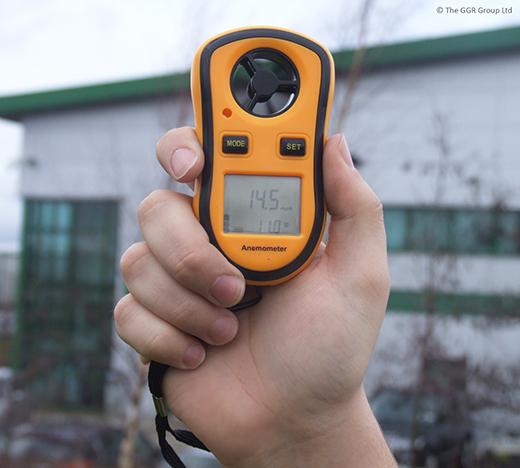 How to measure wind speed
How to measure wind speed
To measure wind speed and temperature on site you can use an anemometer. These useful gadgets are sold online through the GGR Glass website.
When taking wind speed measurements we advise that you liase with the health and safety officer on-site, as wind readings may vary dramatically depending on where they are taken due to the vortex effect around high buildings. Wind speed readings taken around buildings can be misleading as the airflow is often slower in these areas due to the friction of the air moving past the structure.
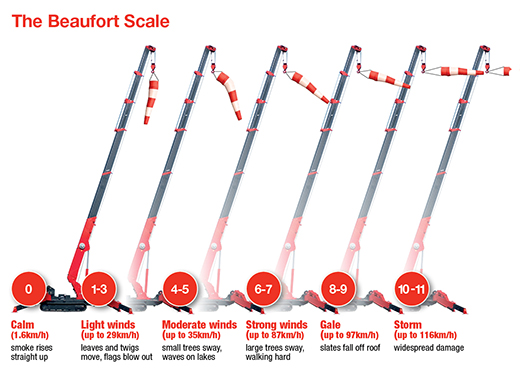 If you do not have an anemometer to hand, you can estimate wind speed from looking at the environment around you and using The Beaufort Scale.
If you do not have an anemometer to hand, you can estimate wind speed from looking at the environment around you and using The Beaufort Scale.
Make sure that you and your team are working in safety by always keeping an eye on the weather whenever you are taking on a lift and make it a part of your regular safety inspection routine.
We hope you have found this safety guide useful, if you have any questions about operating GGR’s equipment in adverse weather conditions please contact our technical support team at your nearest depot.
Trackback URL: https://www.ggrgroup.com/news/ggr-safety-guide-using-cranes-vacuum-lifters-windy-weather/trackback/


